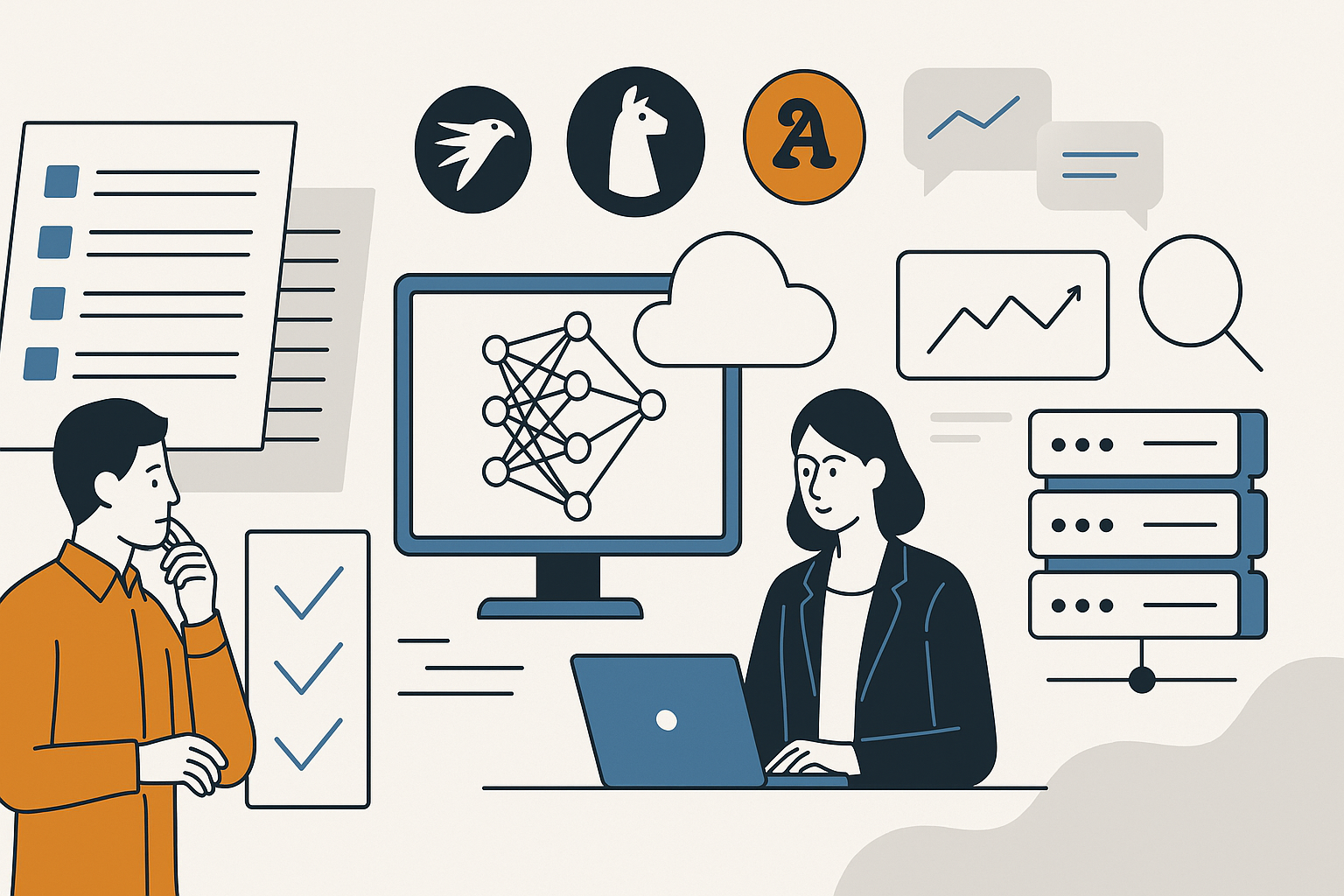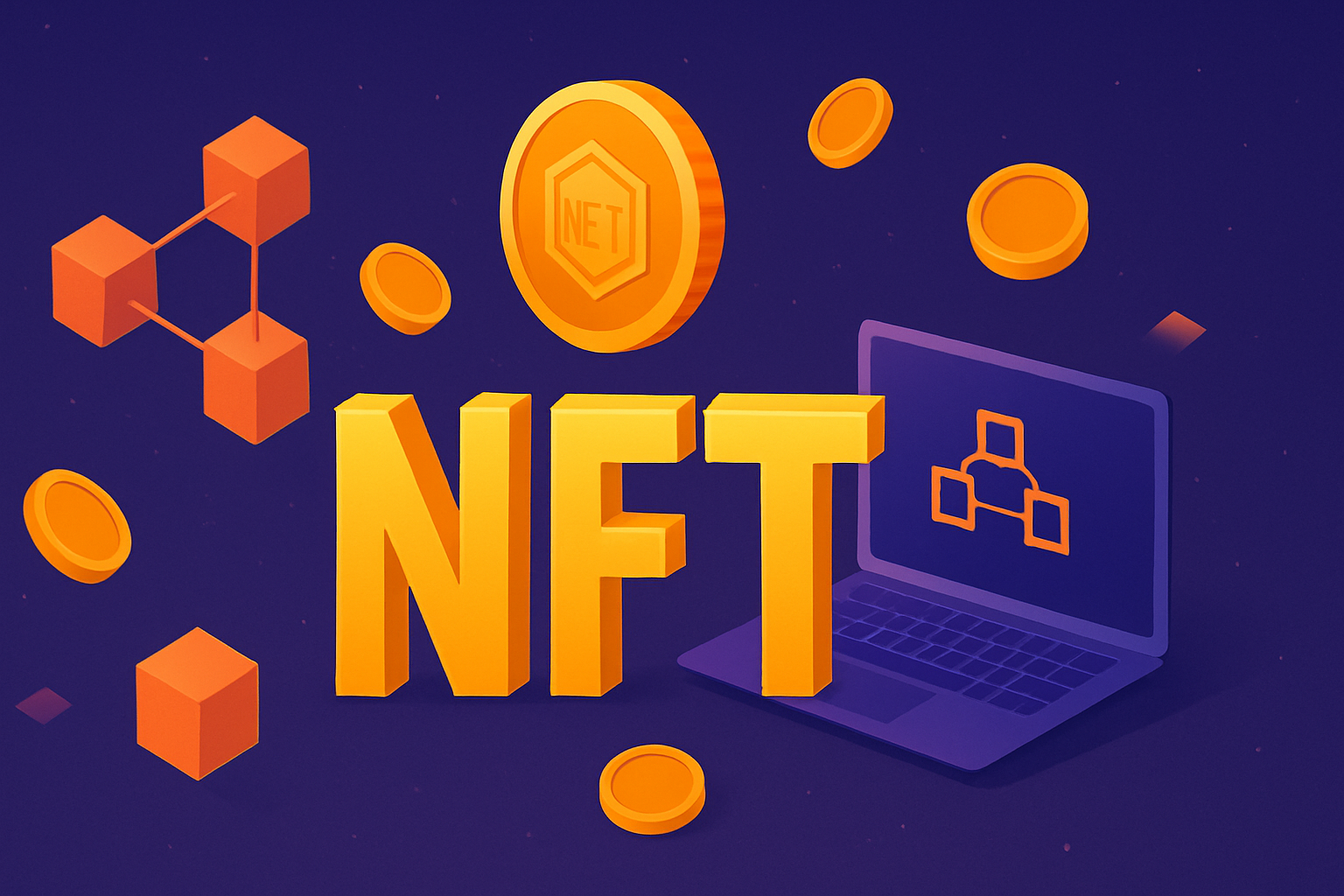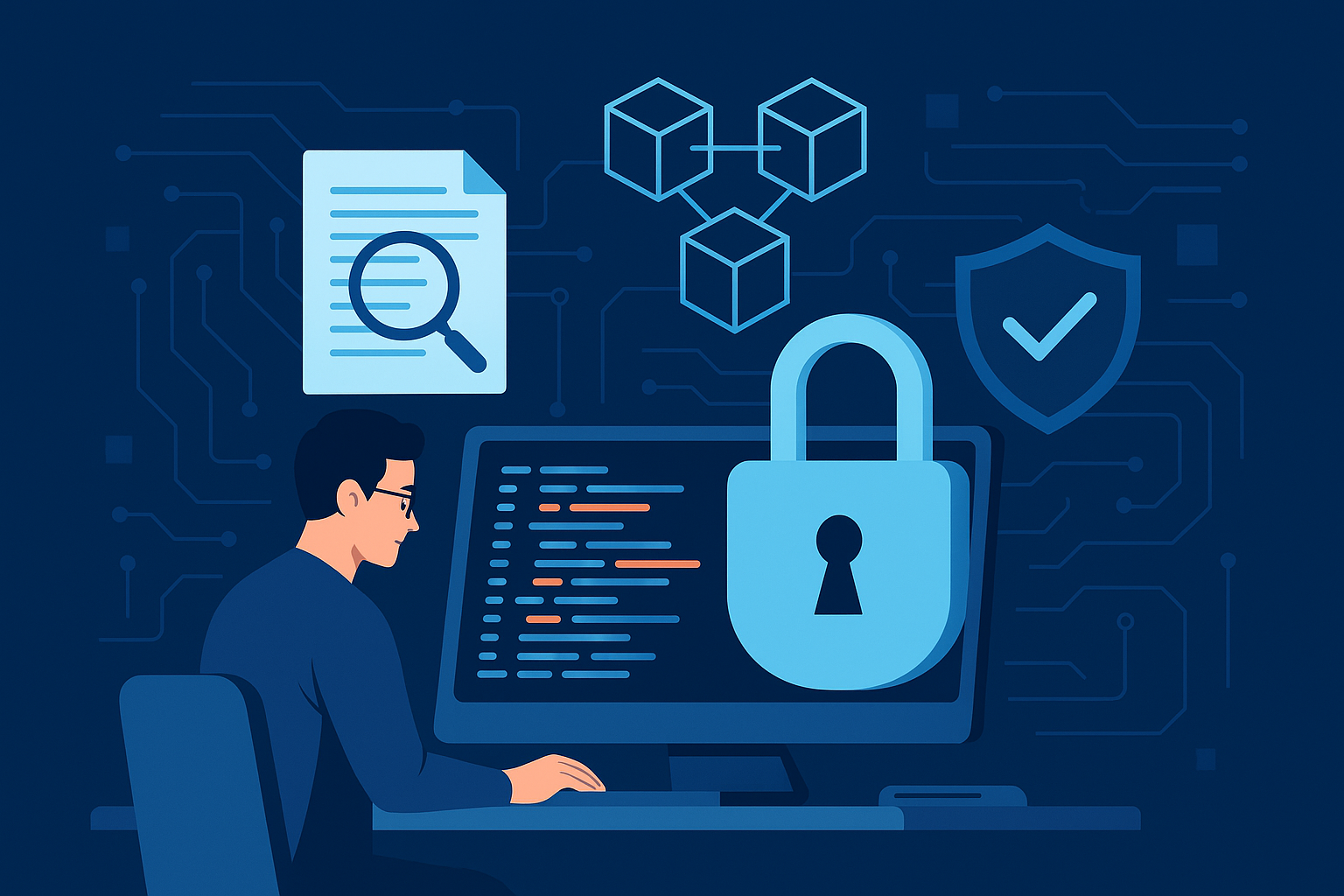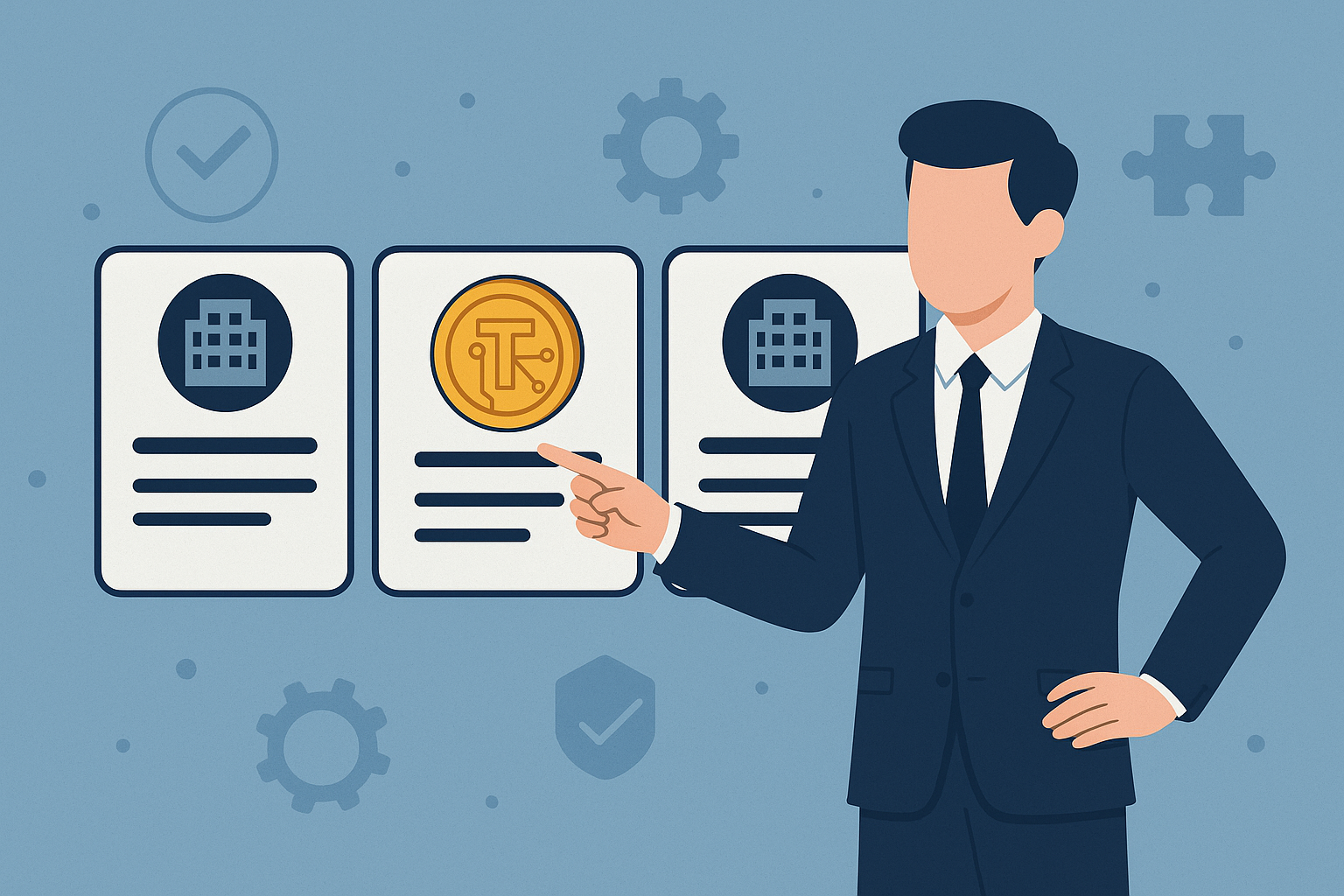Why Custom LLMs Are Becoming a Game-Changer for Businesses in 2025

Strong 8k brings an ultra-HD IPTV experience to your living room and your pocket.
As we move deeper into the AI revolution, a critical shift is happening in how businesses leverage large language models (LLMs). No longer satisfied with generic, one-size-fits-all AI tools, forward-thinking organizations are increasingly turning to custom-built LLMs to meet their specific operational and industry needs. These tailored solutions are not just enhancing productivity—they’re driving innovation, automating complex processes, and creating entirely new business models. In 2025, custom LLM development is becoming the secret weapon behind digital transformation across sectors.
This blog explores why businesses are investing in custom LLMs, how these models outperform their off-the-shelf counterparts, and why having a strategic partner for LLM development is essential for long-term success.
The Rise of Large Language Models in Business
Large language models like GPT-4, Claude, and LLaMA have revolutionized how businesses think about language-based automation. These models can understand, generate, translate, and summarize text with near-human fluency, enabling use cases ranging from chatbots and content generation to code completion and legal document review.
However, general-purpose LLMs—while powerful—come with significant limitations for enterprise applications:
- Lack of domain-specific knowledge
- Security and privacy concerns
- Inconsistent performance on niche tasks
- Limited ability to align with internal workflows and data structures
What Makes Custom LLMs Different?
Custom LLMs are large language models that have been fine-tuned, retrained, or built from scratch using a business’s proprietary data and knowledge base. Instead of relying solely on the massive general corpora used to train base models, custom LLMs incorporate:
- Industry-specific terminology
- Proprietary documentation and knowledge
- Internal standard operating procedures (SOPs)
- Product or customer-specific data
- Context-aware workflows
By aligning the model's training with these internal assets, companies can deploy an LLM that understands their language, processes, and objectives far better than any out-of-the-box solution.
Why Custom LLMs Are a Game-Changer in 2025
1. Hyper-Personalization at Scale
Generic LLMs can provide generalized responses, but they often lack the nuance required to serve real customers or internal users in high-stakes environments. A custom LLM, trained on company-specific language and customer interactions, delivers hyper-personalized outputs—tailored advice, accurate recommendations, or detailed technical support—in seconds.
For example, a fintech firm can train a custom model to interpret regulatory language, generate compliance documents, or answer client queries in a tone aligned with the brand’s voice.
2. Data Privacy and Control
With rising concerns over data governance and compliance (e.g., GDPR, HIPAA, and enterprise-level confidentiality), many companies are unwilling to share sensitive data with public LLM APIs. A custom LLM, especially when deployed on-premise or in a secure cloud environment, ensures complete control over data flows and AI outputs.
Businesses can audit every interaction, train on private data, and enforce access restrictions—reducing legal and reputational risks.
3. Higher Accuracy for Domain-Specific Tasks
Off-the-shelf LLMs may struggle with niche vocabulary or industry-specific scenarios. For instance, medical, legal, manufacturing, and insurance use cases often involve complex terminology and unique decision logic. Custom LLMs are trained on structured and unstructured data relevant to a specific domain, dramatically increasing precision and reducing hallucinations.
This makes them ideal for automating highly specialized tasks such as:
- Medical case summarization
- Legal document interpretation
- Engineering fault diagnosis
- Supply chain risk analysis
4. Workflow Integration and Automation
Custom LLMs are designed to plug into existing enterprise systems—CRMs, ERPs, knowledge bases, and customer support platforms—enabling end-to-end automation. Whether it's generating meeting notes in your internal format or updating a service ticket based on AI-assisted resolution, these models reduce manual effort and increase operational efficiency.
Moreover, businesses can customize prompt structures and response formats to suit real-time applications, agent-assist dashboards, or back-office automation tools.
5. Competitive Differentiation Through Proprietary Intelligence
In 2025, companies are realizing that their data is a strategic asset—and using it to train a private LLM can become a powerful differentiator. Unlike public models that any competitor can access, a custom LLM becomes an intelligent agent unique to your brand, capable of delivering value in a way that no other model can replicate.
This unlocks long-term advantages, including:
- Faster product innovation
- Better customer satisfaction
- Cost-effective support and operations
- Scalable internal knowledge distribution
Industries Leading the Custom LLM Wave
Custom LLMs are being adopted across virtually every sector, but some industries are moving faster than others in 2025:
Financial Services
Banks and fintech startups are building LLMs to generate investment insights, automate compliance, and assist customers through intelligent virtual agents trained on specific product portfolios.
Healthcare
Hospitals and healthtech providers are training LLMs on anonymized patient data, research papers, and clinical workflows to improve diagnostics, summarize case histories, and support treatment planning.
Legal and Compliance
Law firms and in-house legal teams are creating models that interpret contracts, flag compliance risks, and answer legal queries using custom-built AI assistants trained on historical case law and internal legal frameworks.
Retail and E-commerce
E-commerce platforms are personalizing shopping experiences by using custom LLMs trained on product catalogs, customer reviews, and purchase histories to recommend items, answer customer queries, and generate personalized marketing content.
Manufacturing and Logistics
Supply chain firms are leveraging LLMs to automate reporting, track inventory anomalies, and simulate what-if scenarios using proprietary logistics data.
How to Build a Custom LLM for Your Business
As the demand for domain-specific artificial intelligence increases, businesses across sectors are racing to develop custom large language models (LLMs) that can better understand their data, customers, and workflows. Unlike general-purpose AI models, a custom LLM is trained or fine-tuned on your proprietary data, giving it a competitive edge in accuracy, context, and performance. However, launching a custom LLM is a multi-phase journey that requires careful planning and technical expertise. Here’s a breakdown of how to approach it effectively.
1. Data Strategy and Curation
The cornerstone of any successful LLM initiative is high-quality, relevant data. Start by conducting an audit of all internal data sources: emails, support tickets, knowledge bases, CRM records, chat transcripts, and even PDF documents. Structured data like databases and spreadsheets can also be leveraged, particularly when combined with natural language content.
Cleaning and labeling data is critical. This includes removing duplicates, anonymizing sensitive information, and annotating specific entities or intents if you're targeting downstream applications like customer service or knowledge retrieval. The better your data, the better your LLM will perform—garbage in, garbage out holds especially true here.
Beyond internal data, consider augmenting your dataset with industry-specific open datasets, public knowledge graphs, or domain-specific corpora. This can improve performance on rare or nuanced queries.
2. Choose the Right Foundation
Next, select your foundation model strategy. This decision will affect everything from your development timeline to your compute budget and long-term flexibility:
Fine-tuning an open-source model (like LLaMA, Mistral, Falcon, or Mixtral) allows you to benefit from state-of-the-art research while maintaining control over weights and architecture. This option is ideal for teams that want transparency and model ownership.
Using a proprietary model via APIs (such as OpenAI’s GPT-4 or Anthropic’s Claude) lets you build fast with top-tier language capabilities, but at the cost of reduced customization and data privacy trade-offs.
Training a model from scratch is the most expensive route, suitable only for organizations with massive proprietary datasets, stringent compliance needs, or unique architectural requirements (e.g., low-latency, on-device, or multi-modal models).
Evaluate your regulatory obligations, infrastructure readiness, and desired control levels before making this call. In heavily regulated industries like healthcare and finance, open-source fine-tuning may offer more flexibility for compliance.
3. Training and Fine-Tuning
Once you’ve selected your base, training begins. Most organizations will opt for transfer learning—starting with a pretrained model and fine-tuning it using supervised learning on your labeled datasets.
Reinforcement Learning from Human Feedback (RLHF) is often added to refine outputs further, especially for improving factual accuracy, tone, and alignment with business-specific goals. This technique helps the model "learn" what constitutes a good versus bad response in your unique context.
Here, the expertise of a professional AI development team becomes vital. They can define fine-tuning strategies, design proper validation sets, prevent data leakage, and optimize training loops to reduce overfitting while boosting contextual performance.
4. Evaluate and Deploy
Model evaluation is not just about accuracy scores—it’s about performance in production. Create a suite of test prompts, simulate edge cases, and compare performance against business KPIs like customer satisfaction, call deflection, or ticket resolution time.
Performance benchmarking should cover latency, inference cost, hallucination rate, and alignment with compliance policies. Using prompt engineering can also improve model performance without retraining, helping you adapt outputs to specific workflows or user interfaces.
Deployment options include private cloud, hybrid cloud, or on-premise environments—each with trade-offs in latency, cost, and compliance. Use containerized deployment with autoscaling capabilities to meet variable demand. Implement access controls, logging, and monitoring to ensure security and accountability.
5. Continuous Improvement
A custom LLM is not a “set-it-and-forget-it” solution. It evolves with your business. Build feedback loops into every interaction—allow users to rate outputs, flag inaccuracies, and suggest improvements.
Use this feedback to create retraining cycles that update the model weekly, monthly, or quarterly, depending on your use case. As your data grows or business offerings shift, your LLM must adapt accordingly to maintain relevance and performance.
You should also monitor real-world drift—when your model starts performing worse due to changes in user behavior, vocabulary, or workflows. Continuous retraining ensures long-term model health and ROI.
Partnering With the Right LLM Development Team
Due to the technical complexity of training, deploying, and maintaining a high-quality LLM, many businesses partner with specialized AI development firms. These firms offer full-stack support—handling everything from data curation and infrastructure management to prompt engineering and UI integration.
An ideal partner will deeply understand your industry context and business needs. They should provide access to GPU-accelerated cloud infrastructure, help define use-case-driven model evaluation strategies, and ensure that training occurs in secure, compliant environments.
In industries with strict governance requirements (like healthcare, defense, or finance), your partner should help enforce role-based access, audit trails, and encryption for sensitive data. Multi-modal, multilingual, or cross-platform support might also be necessary if your business spans multiple customer channels or geographies.
Whether your goal is to streamline internal operations, enhance customer experiences, or power a new product, a reliable LLM development team can bridge the gap between experimentation and real-world impact.
Final Thoughts
The demand for custom LLM development is exploding in 2025, and it’s easy to see why. These models bring unprecedented efficiency, insight, and competitive edge to organizations that embrace them strategically. Businesses that take the step toward building their own tailored AI systems are not just adopting new tools—they're engineering a future where their proprietary intelligence becomes a living, evolving asset.
If you're considering developing a custom LLM tailored to your business, it’s time to start building the infrastructure, partnerships, and strategy required to succeed in this new AI-driven landscape.
Note: IndiBlogHub features both user-submitted and editorial content. We do not verify third-party contributions. Read our Disclaimer and Privacy Policyfor details.







